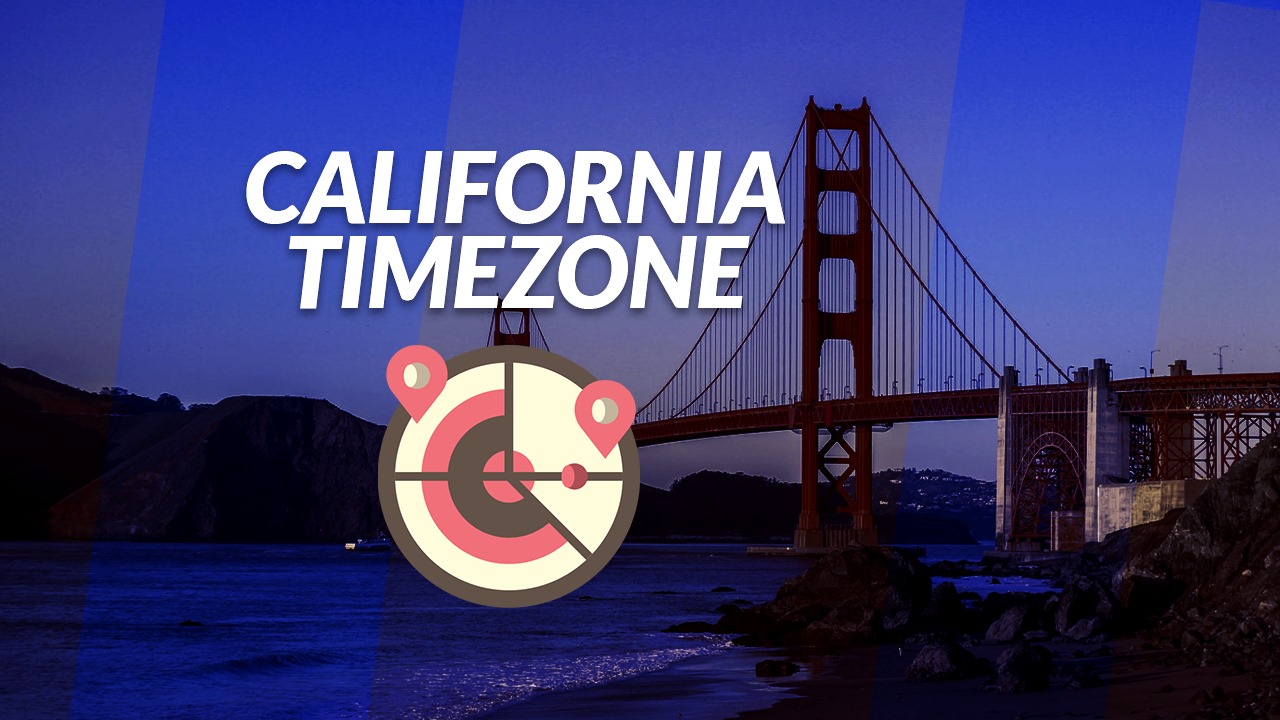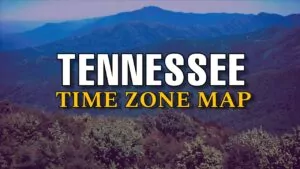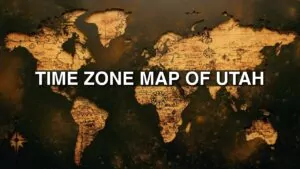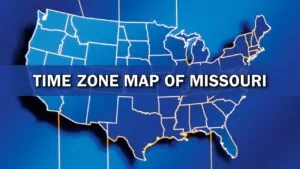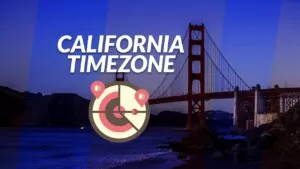Many people get confused about time zones, especially when planning trips or calling friends and family in different parts of the world. The question “What time is it in California?” can often lead to more questions than answers.
Understanding how Pacific Time works in California is key to keeping schedules straight and avoiding missed connections.
One interesting fact about this topic is that the largest city in the Pacific Time Zone is Los Angeles. This guide will break down everything you need to know about Pacific Time, including daylight saving changes, comparing it with other time zones, and even how current weather conditions might affect your plans if you’re visiting major cities like Los Angeles or San Francisco.
Get ready to master the clock with ease. Keep reading for all the details!
Understanding the Pacific Time Zone
The Pacific Time Zone stretches far and wide, covering California’s sprawling coasts to the edge of Nevada. It keeps time with the rhythm of the ocean — ticking away hours that define both daily life and monumental moments for those within its reach.
Current Time in California
California follows Pacific Standard Time (PST), which is 8 hours behind Coordinated Universal Time (UTC-8). On March 5, 2024, clocks in California will show exactly 7:48:22 AM. This means when it’s early morning in California, it might be afternoon or even evening in other parts of the world.
Switching between Daylight Saving Time and standard time keeps everyone on their toes. Starting March 10, California will spring forward to Pacific Daylight Time (PDT), moving clocks one hour ahead.
Remember—this change affects how Californians connect with others globally and manage their schedules until we “fall back” to standard time on November 3.
Major Cities in Pacific Time Zone
California operates on Pacific Time, which is key to its daily life and logistics. Los Angeles, the largest city in this time zone, leads the list with its bustling streets and vibrant culture.
- Los Angeles: As the heart of California’s entertainment industry, Los Angeles never sleeps. It’s where dreams are made under the sunny skies. The city’s vast economies range from technology to media.
- San Francisco: Known for the iconic Golden Gate Bridge, San Francisco sits at the tech world’s epicenter. Its rolling hills and foggy weather distinguish it from its Southern counterpart.
- San Diego: Close to the Mexico border, San Diego enjoys warm weather and beautiful beaches year-round. It’s famous for its laid-back lifestyle and thriving biotech industry.
- Portland, Oregon: Though not in California, Portland shares the same Pacific Time Zone. This city stands out for its quirky culture, craft breweries, and green spaces.
- Seattle, Washington State: Home to the Space Needle and a booming tech scene led by companies like Amazon and Microsoft. Seattle’s coffee culture is unmatched, reflecting its dynamic society.
Daylight Saving Time in California
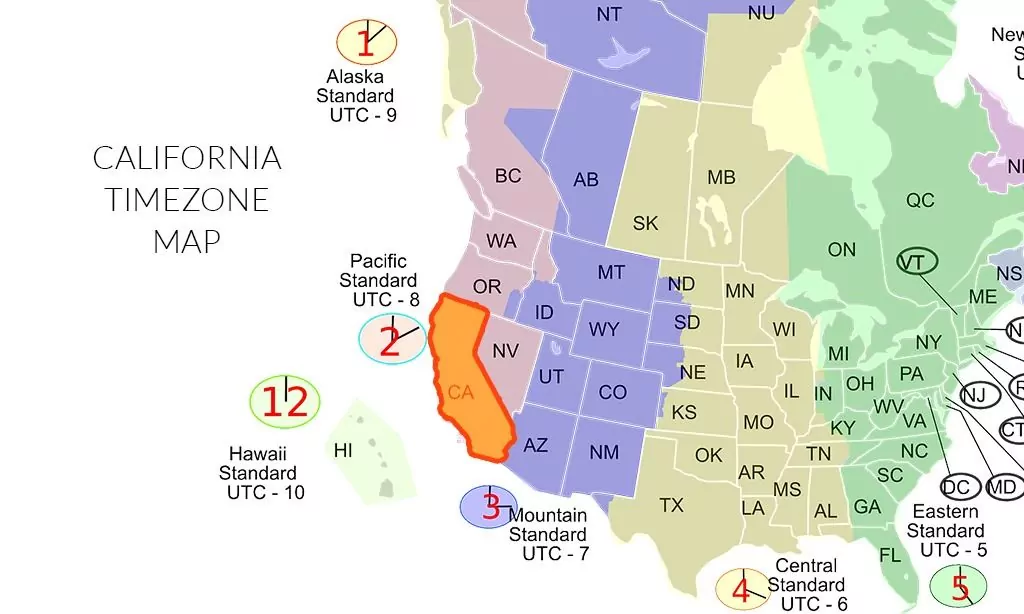
Daylight Saving Time (DST) in California means longer evenings to enjoy the sun. In spring, clocks jump forward an hour, giving us more daylight after work and school.
When it Starts and Ends
Daylight Saving Time (DST) in California has clear start and end dates. Mark your calendars, folks—the schedule is set.
- Starts on March 10, 2024: At exactly 02:00 AM, clocks spring forward an hour. This means less sleep for one night but more sunlight in the evening hours ahead. It’s a sign that warmer days are coming, making evenings longer and nights shorter. People often use this extra daylight for outdoor activities.
- Ends on November 3, 2024: At precisely 02:00 AM, we turn back time, quite literally. Clocks go back an hour, giving everyone an extra hour of sleep for one night. While it marks the return of darker evenings, it also means brighter mornings. This shift back to Standard Time prepares us for the winter months.
Impact on Daily Life
Daylight saving time changes in California can throw off schedules and routines. Clocks spring forward an hour in March, making mornings darker and evenings brighter. This shift means people often lose an hour of sleep on the night of the change, leading to a groggy start to their week.
Many find adjusting their body clock challenging, affecting productivity and mood.
The extra evening light encourages outdoor activities after work or school, boosting time for play and exercise. However, it can disrupt sleep patterns for some, particularly young children and those sensitive to changes in routine.
Businesses adjust operating hours, planning events around the new daylight hours. Farmers have mixed feelings; while some appreciate the extended daylight for chores, others struggle with the impact on animals’ feeding schedules that don’t change with the clock.
Time Difference between California and Other Key Locations
Grasping the time difference between California and other key locations is essential for business communication, travel planning, and keeping in touch with friends or family abroad. Here’s a succinct guide to help you navigate these differences:
| Location | Time Difference with California (PT) |
|---|---|
| Hawaii–Aleutian Time Zone | -2 hours |
| Alaska Time Zone | -1 hour |
| Mountain Time Zone | +1 hour |
| Central Time Zone | +2 hours |
| Eastern Time Zone | +3 hours |
| Atlantic Time Zone | +4 hours |
| UTC−7 (e.g., Yukon since September 2020) | Same as PT |
| Zona Noroeste, Mexico (Baja California) | Same as PT |
This table simplifies understanding of how Pacific Time aligns with other time zones across North America and includes a couple of specific international references, like Yukon’s recent change and the Zona Noroeste in Mexico. For anyone involved in cross-border activities or those curious about time zone differences, this guide is a handy reference.
Converting Pacific Time to Other Time Zones
Converting Pacific Time to other time zones isn’t as hard as it might seem. All it takes is a little math and some knowledge of global time zones.
- To convert Pacific Standard Time (UTC – 8) to Eastern Time (ET), add 3 hours. During standard time, if it’s 12 PM in California, it’s 3 PM ET.
- For Mountain Time (MT), just add 1 hour. A noon in San Francisco means it’s 1 PM in Denver.
- Central Standard Time (CST) requires adding 2 hours. That lunchtime call from Los Angeles at noon reaches Chicago at 2 PM.
- If you’re reaching out to someone in Alaska Standard Time (AKST), subtract an hour. Your 12 PM is their 11 AM, making plans across these areas simpler.
- Converting to Hawaii – Aleutian Standard Time (HAST) means subtracting 2 or 3 hours depending on daylight savings. This makes a noon chat in San Francisco sync up with either a 9 AM or a 10 AM start in Honolulu.
- For international conversions, like Greenwich Mean Time (GMT), add 8 hours. Your early morning, say 4 AM in California, matches the noon buzz in London.
- British Columbia’s split between Pacific and Mountain Times adds an extra layer for Canadian connections – remember the local specifics before calling Dawson Creek or Fort St. John.
- Yukon’s shift to UTC−7 throws another interesting curveball for those keeping track of contacts across northern borders.
Current Weather Conditions in Major California Cities
Keeping up-to-date with the current weather conditions in California’s major cities can help you plan your day more effectively. Here’s a simplified look at what to expect weather-wise in some key locations across the Golden State. Remember, the weather can play a significant role in your daily activities, whether that’s deciding what to wear or determining the best time for outdoor events.
| City | Temperature (°F / °C) | Conditions |
|---|---|---|
| Los Angeles | 53°F / 12°C | Clear and cool |
| San Francisco | 57°F / 14°C | Partly Cloudy |
| San Diego | 55°F / 13°C | Sunny |
| Sacramento | 58°F / 14.5°C | Mild |
| Fresno | 59°F / 15°C | Mostly Sunny |
This table provides a snapshot, giving you insight into the weather patterns likely to influence your plans. From the clear and cool conditions in Los Angeles, reflected in a comfortable 53°F / 12°C, to the mild temperatures reaching 58°F / 14.5°C in Sacramento, California offers a variety of climates even within its major cities. Whether you’re in San Diego enjoying the sunshine or experiencing the partly cloudy skies of San Francisco, understanding the current weather conditions can significantly enhance your experience in the Golden State.
Conclusion
Mastering the Pacific Time Zone in California can truly enhance how you plan your day, especially when juggling commitments across different time zones. It brings clarity to scheduling meetings and understanding TV broadcasts or live events.
Remember, staying informed about daylight saving shifts is crucial for smooth transitions throughout the year. With this guide, navigating time in California just got a whole lot easier – whether you’re catching a flight from San Francisco International Airport or planning an adventure in Hell’s Canyon.

